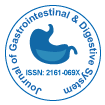开放获取期刊获得更多读者和引用
700 种期刊 和 15,000,000 名读者 每份期刊 获得 25,000 多名读者
索引于
- 哥白尼索引
- 谷歌学术
- 夏尔巴·罗密欧
- 打开 J 门
- Genamics 期刊搜索
- 中国知网(CNKI)
- 电子期刊图书馆
- 参考搜索
- 哈姆达大学
- 亚利桑那州EBSCO
- OCLC-世界猫
- SWB 在线目录
- 虚拟生物学图书馆 (vifabio)
- 普布隆斯
- 日内瓦医学教育与研究基金会
- 欧洲酒吧
- ICMJE
有用的链接
开放获取期刊
分享此页面
抽象的
Novel Dual Magnetic Drug Targeting and Hyperthermia Therapy in Hepatocellular Carcinoma with Thermosensitive Polymer-Coated Nanoparticles
Chang PEJ, Purushotham S, Rumpel H, Kee IHC, Ng RTH, Chow PKH, Ramanujan RV and Tan CK
Background: Magnetic drug targeting (MDT) uses magnetic fields to localize magnetic nanoparticles (MNP) to tumor. Once localized, applying an alternating magnetic field (AMF) to the MNPs generates heat energy. Poly-N-isopropylacrylamide (PNIPA) is a thermosensitive polymer that contracts when heated, releasing any drugs which are bound to it. Utilizing these properties, MNP coated with PNIPA polymer on to which doxorubicin is loaded can be localized to hepatocellular carcinoma (HCC) with an external magnetic field. Application of an AMF will then generate localized magnetic hyperthermia (MH) within the tumor, thus releasing bound doxorubicin. This study explores this novel drug delivery model which can be used for targeted dual therapy (MDT and MH) of HCC.
Aim: To demonstrate that doxorubicin-loaded-PNIPA-coated-MNP can be delivered intra-arterially to target HCC in a rat model and that heat is generated and doxorubicin is released when an AMF is applied.
Methods: Morris hepatoma cells are implanted into the livers of buffalo rats. HCC development is confirmed on MRI using a specially-constructed rat-MRI coil. 0.5 ml of doxorubicin-loaded-PNIPA-coated-MNP solution is injected into the hepatic artery and localization of MNP in HCC is confirmed with MRI. Rats are sacrificed for histology of liver and other organs. AMF is applied to doxorubicin-loaded-PNIPA-coated-MNP solution and the temperature measured to demonstrate local hyperthermia in vitro. The amount of doxorubicin released is measured by spectrophotometry.
Results: Successful intra-arterial delivery of MNP was confirmed on post-injection MRI. On histology, iron particles were seen in HCC but not in normal liver or other organs. When AMF was applied, temperature of the suspension reached the target temperature of 42°C within 5 minutes and remained within hyperthermia range(42°C-48°C) for 15 minutes. During this period of hyperthermia, 4.7% (~71 μg) of loaded doxorubicin was released.
Conclusions: We have demonstrated in a rat model the feasibility of intra-arterial doxorubicin-loaded-PNIPA-coated-MNP for synergistic dual therapy of HCC using targeted hyperthermia and doxorubicin.

 English
English  Spanish
Spanish  Russian
Russian  German
German  French
French  Japanese
Japanese  Portuguese
Portuguese  Hindi
Hindi